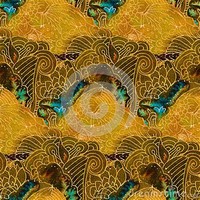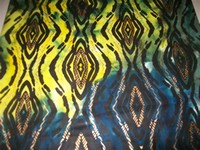Facts about Batik

When the Dutch took sovereignty over Indonesia in the seventeenth century, they introduced batik to Holland and subsequently to the rest of Europe.

Today, “Java wax” batiks and printed imitations are manufactured in factories in Europe, Japan and several West African countries.

The making of an intricate hand-drawn batik is a lengthy and painstaking process which, together with the dye baths, can take from five weeks to six months or more.

Batik is usually done on good-quality cotton fabric, although silk can be used.

Today, aniline and other chemical dyes are almost universally used for batik dying.

Some archaeological findings of batik in Indonesia date to the tenth century.

Batiks were also brought home by West African soldiers who served in Indonesia between 1810 and 1862.

Fragments of sculpture from a twelfth century temple in Java show figures wearing garments ornamented with patterns that strongly resemble those of contemporary batik.

In Africa, batik is found decorated with tribal patterns; in India, with the ancient paisley patterns; and in China and Japan, with delicate oriental motifs.

The making of a fine batik can take as long as six months, and such works are highly prized.

Many patterns were intended for a particular use, or were forbidden to commoners, such as batik parang rusa and batik swat, which were reserved for the exclusive use of royalty.

Chinese settlers in Indonesia began “batik factories” involving entire villages in the production process.

To make traditional batik, designs are hand-drawn with hot wax on prepared fabric, using special tools called cantin.

In 1750, an attempt to import 2,000 pieces of batik into Holland failed because no market could be found for them.

Along with music and dance, the creation of batik was considered to be a way to develop spiritual discipline.

Batik is an Indonesian word, and refers to a generic wax-resist dyeing technique used on textile.

Batiks produced by this method are considered to be of a lower quality, and be distinguished by slight irregularities at the place where the edges of the stamped pattern are joined.

Archeological evidence of the use of batik cloth has been found in Egypt, Persia, India, China, Japan, Indonesia, and other parts of Southeast Asia.

The batik process produces a design on textiles through the use of a dye-resist, usually wax, which prevents the dye from penetrating the covered areas of the fabric, thus creating a pattern in negative.

Contemporary batik artists may use etching, discharge dyeing, stencils, different tools for waxing and dyeing, wax recipes with different resist values and work with silk, cotton, wool, leather, paper or even wood, and ceramics.
